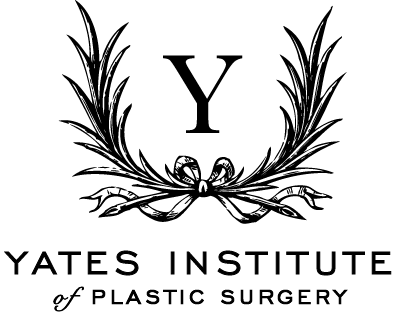What are the benefits of a tummy tuck?
The abdominoplasty can restore the flat and firm aspect of the tummy. After the procedure is performed, the abdomen gets tighter, the stomach flatter, the fat bulges are eliminated, and the patient can even get rid of some of the stretch marks and excess skin.
Clothes fit better, and it is easier to perform physical activities without worrying about the fat bulge and excess skin on the lower part of the tummy.
Am I a good candidate for a tummy tuck?
Patients interested in the tummy tuck procedure are concerned with excess skin folds in the area. The excess skin forms something similar to an “apron,” covering partly or entirely the suprapubic area. The tummy is bulging, and often stretch marks and loose skin are present.
To be eligible for the tummy tuck intervention, you should have good health and emotional condition, reasonable expectations from the surgery, and the possibility to take about a week or two off from work for the recovery period.
When to get a Tummy Tuck?
There are a few cases when tummy tuck surgery is recommended.
1. After considerable weight loss
One of these cases is after considerable weight loss. Patients undergoing bariatric surgery or a dramatic weight loss transformation often feel trapped in their bodies once they have reached their ideal weight. And this happens because of all the excess skin that is present in different areas of the body, including the tummy. After shedding the excess weight, the skin doesn’t always retract on the new contours of the body. Generally speaking, the more weight you lose, the higher are the chances of being left with saggy skin, especially if you are over 30 years old. In this case, the tummy tuck procedure can help you get rid of the excess of skin and additional fat tissue that forms the belly apron covering partly or entirely the suprapubic area.
2. After pregnancy and childbirth
The tummy tuck is one of the procedures performed to help you get back to your pre-pregnancy body. After pregnancy and childbirth, some women discover that jumping back to their previous shape is not always possible without help. Exercising and a healthy diet can help you lose weight and look fit, but if you are left with excessive skin sagginess on the lower abdominal area, this issue can only be corrected with the help of plastic surgery.
The abdominoplasty is the procedure performed to correct diastasis recti – a condition that can occur during pregnancy caused by the growing uterus. When diastasis recti is present, the patient notices that the tummy is not firm, even if there are no fat deposits at the level of the area.
Different Types of Tummy Tucks
There are multiple types of tummy tucks to be performed, depending on the characteristics of the patient. There is a different surgical plan for each type of tummy tuck.
Mini tummy tuck
The mini tummy tuck is the ideal procedure for patients with a minor skin sagginess at the level of the tummy and strong abdominal muscles. Dr. Yates will make a very small incision on the lower part of the abdomen and use it to eliminate the excess skin and make the abdomen perky and firm again.
Traditional tummy tuck
The traditional tummy tuck implies a larger incision positioned on the suprapubic area, where the abdominal area ends. Depending on the amount of skin sagginess, the incision can go from one hip bone to the other or can be smaller. Another incision is performed around the belly button to reposition it after the skin is redraped on the tummy.
Extended tummy tuck
This procedure is recommended for patients who had a massive weight loss and are now left with excess skin not only on the level of the abdomen but also on the flanks. In this case, the incisions need to go to the sides, too, so the excess skin in the area can be eliminated.
Circumferential tummy tuck
This type of tummy tuck can be indicated for patients who had bariatric surgery. The incisions go around the waistline to address excess skin on the lower part of the back too.
What should I do to prepare for my tummy tuck?
- Optimize your nutrition
- Stabilize your weight
- Avoid smoking
- Avoid anti-inflammatory medication
Keep a healthy, balanced diet before undergoing the tummy tuck. Overeating is not recommended before the surgery, and drastic diets are also to be avoided as this might influence the recovery process.
What happens during the tummy tuck surgery?
The abdominoplasty is performed with the patient under general anesthesia. The procedure can take quite a few hours, depending on the condition of the tissues and the amount of skin to be eliminated. First, the plastic surgeon will make the incision on the lower part of the tummy. The skin and fat tissue are then separated from the muscles of the abdominal wall. Weak abdominal muscles are strengthened with a suture after they are brought together on the median line. The skin is then redraped on the abdomen, and the excess is eliminated, making sure there is good tension in the skin. Incisions are sutured, and the patient is moved to the recovery room.
Can a tummy tuck help me get rid of stretch marks?
This is a popular question as, in most cases, the belly apron doesn’t come alone but is associated with the presence of stretch marks. Skin sagginess is often caused by the over-stretching of the tissues, followed by weight loss. The skin is unable to retract, and unwanted skin folds occur. However, when the skin is overstretched, there is another thing happening, and this we know as stretch marks.
If you ever had stretch marks, you know that there is no real treatment for them. Whatever treatment you might try could only have one effect – improve the aspect of the skin, but making the stretch mark disappear completely is not possible.
When the tummy tuck surgery is performed, Dr. Yates eliminates the skin that is in excess at the level of the abdominal area. This means that the stretch marks that are on the skin to be removed will disappear. However, if the stretch marks are positioned on the upper part of the tummy, they will remain, but they will have another position on the tummy, as Dr. Yates pulls over the skin to create better tension that ensures a firm and flat tummy.
The tummy tuck surgery can help you get rid of some of your stretch marks if they are positioned on the lower part of the tummy (the abdominal apron) that is excised during the procedure.
How much does a tummy tuck cost?
On average, $6,500 plus anesthesia and facility fees ($3,000). Each patient is different, and costs may vary based on complexity. The tummy tuck can be performed as a part of the Mommy Makeover procedure. Combined procedures are often more affordable compared to when the patient undergoes the same procedures at separate times.
What is the recovery process for a tummy tuck?
The first two weeks after tummy tuck surgery are the most challenging for the patient. During this time, you are advised to get enough rest, but also be active around the house at least for a few minutes every couple of hours. Antibiotics and analgesic medication might be prescribed to alleviate the potential discomfort and prevent infection.
Compression garments should be worn for about six weeks to help reduce the swelling and bruising the naturally occur after such a complex procedure. Lifting heavy objects is to be avoided for at least six weeks post-op.
There are some rules patients need to follow to ensure a fast recovery period and minimize potential risks, such as:
- Avoid smoking for at least two to three weeks post-op. Smoking can have a significant impact on the recovery process and trigger complications such as delayed wound healing, wound dehiscence, and skin necrosis due to the poor oxygenation of the tissues.
- Walk with the back slightly bent forward until the sutures are healed. This helps you avoid unnecessary pressure on the incisions that might lead to a potential rupture.
- Sleep with the knees bent to avoid overstretching the incisions.
- Don’t lift anything heavy (your kids included).
- Coughing, sneezing, and laughing too hard are also to be avoided until the incisions heal.
What other procedures can be combined with a tummy tuck?
Tummy Tuck FAQs
How Much Is a Tummy Tuck?
There are many different types of tummy tucks, from a mini tummy tuck that only eliminates skin excess from the lower part of the abdomen to an extended tummy tuck that entails incisions on the suprapubic area, around the belly button, and on the sides to eliminate saggy skin from the flanks too. Generally speaking, you can expect to pay around $6,500 plus anesthesia and facility fees ($3,000). If the procedure is performed together with liposuction or as part of the Mommy Makeover package, the cost goes up.
What Is a Tummy Tuck?
Tummy tuck or abdominoplasty is the procedure performed to correct the appearance of the abdomen. After pregnancy and childbirth, women can be left with saggy skin on the tummy and distended abdominal muscles. Men can also struggle with skin laxity at the level of the midline caused by considerable weight loss or the natural aging process. The tummy tuck can help you get a firm and flat tummy and strengthen loose abdominal muscles.
How to Get a Tummy Tuck Paid for by Insurance?
The tummy tuck can be covered by insurance only if it is a medical necessity. In other words, if the procedure is performed purely for cosmetic reasons, the insurance won’t cover it. But if you are dealing with rashes, skin irritations, and other issues, you might be able to get insurance to pay for your tummy tuck surgery.
What Is a Mini Tummy Tuck?
A mini tummy tuck or a skin-only tummy tuck is a popular approach for an abdominoplasty. The procedure is performed on patients dealing with skin laxity under the belly button. During the mini tummy tuck, Dr. Yates will make a small incision on the suprapubic area and use it to eliminate the excess skin. The traditional tummy tuck entails a second incision needed to reposition the navel – but this is not required when a mini tummy tuck is performed.
When Can You Lay Flat After Tummy Tuck?
It can take up to a few weeks until you can lay flat after a tummy tuck surgery. After the intervention, the plastic surgeon will advise you to keep your back slightly elevated, and your knees bent when resting in bed to avoid putting too much pressure on the incisions.
How Long to Recover From Tummy Tuck?
Depending on the complexity of the procedure, the age, and the health condition of the patient, the recovery period after the tummy tuck can last up to two or three weeks. Most patients can start resuming work and daily activities after the two weeks mark.
How to Sleep After Tummy Tuck?
The recommendation is to sleep on a few pillows and use some more pillows under the knees. The slightly bent position is required to help you avoid putting too much pressure on the incisions that could cause wound opening. Sleeping on the front is to be avoided for a minimum of two to three weeks after the abdominoplasty.
Is a Tummy Tuck Dangerous?
A tummy tuck is a complex plastic surgery procedure, and it is associated with certain risks and complications. Among these risks, we can mention infection, unsightly scarring, wound dehiscence, seroma, and hematoma. To minimize the risks, it is crucial to choose a talented and experienced board-certified plastic surgeon to play out your intervention and follow the recommendations to the letter.
How Long Does a Tummy Tuck Take?
The tummy tuck can take one to three or more hours, depending on the complexity of each case. The mini tummy tuck often takes no longer than an hour, while an extended tummy tuck or a tummy tuck combined with lipo can take up to two or three hours.
How Long Will I Be Hunched Over a Tummy Tuck?
You will need to walk with the back slightly bent forward or hunched over for at least a week after your abdominoplasty to avoid rupturing the incisions. You can resume walking with your back straight when the incisions are fully closed. For some patients, this can take up to ten to fourteen days.
How to Get Rid of Seroma After Tummy Tuck?
Seroma is a potential side effect that can occur after getting a tummy tuck. To avoid fluid accumulation, Dr. Yates might use drains. However, you should know that there are different treatment options available to get rid of seroma, such as needle aspiration or even surgical excision, among others.
Can You Get Pregnant After a Tummy Tuck?
Yes, you can get pregnant after getting an abdominoplasty. But the recommendation is to undergo the procedure only after you know your family is complete, as an ulterior pregnancy can alter the results achieved with the tummy tuck. With the growing uterus, the tissues of the abdominal wall are distended, and this might cause torn abdominal muscles and saggy skin after childbirth.
How Long After a Tummy Tuck Can You Have Sex?
Having sex too soon after surgery can be rather uncomfortable, not to mention that it can trigger complications such as wound opening. It is important to be patient and avoid engaging in intercourse for at least three to four weeks after the abdominoplasty was performed. This will help you avoid unwanted complications and the potential pain and discomfort associated with having sex while you are still healing.
How Painful Is a Tummy Tuck?
The tummy tuck procedure is usually performed with the patient under general anesthesia to avoid any pain or discomfort. After you recover from the effects of the anesthesia, you might feel dizzy and nauseous, but pain medication will be administered so you won’t feel pain. Upon the return home, it is normal for patients to experience a certain level of pain and discomfort, but in most cases, these are easily managed with the help of regular analgesic medication. Make sure to take your pills and follow Dr. Yates's indications for post-op care to avoid unnecessary pain and discomfort.
Related Blog Posts


